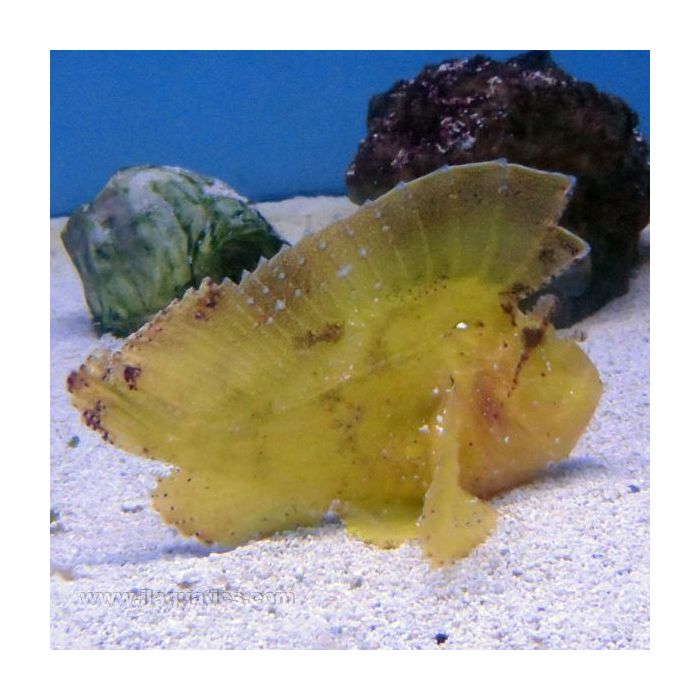Colored Leaf Fish (Asia Pacific)
Leaf fish are fascinating ambush predators whose texture and coloration mimics a dead leaf fallen to the sea floor. They even move their bodies in waving motions as if they were being blown in the current. Sometimes they drift so far to the side they nearly fall over in a hilarious attempt to be unseen. Smaller animals will be swallowed whole with their huge mouths. They greedily eat all shrimp many crabs, and any small or slender bodied fish. They do not harm corals, sponges, macroalgae or snails. They generally ignore anything that cannot be eaten. Best tank mates are large bodied fish such as tangs, angelfish, groupers, triggerfish and puffers. Sometimes the slow moving leaf fish may become a target for aggressive fish. Fish that graze on the rockwork may mistake the leaf fish's body for algae and pick on them. Leaf fish don't fight with their own kind, however they may stress each other out, and for this reason if they are to be kept together the aquarium must be sufficiently large that they can be out of eyesight of one another. Occasionally the leaf fish may shed its skin in order to clean itself.
The tips of the leaf fish's fins contain a toxin that can cause extremely painful wounds. The sting may be as mild as a hornet sting or much worse- great care should be taken when handling the leaf fish, and children should never be allowed to put their fingers in the water with the fish.
Leaf fish feed by sucking in their food whole into their enormous mouths. They are carnivores and should be fed at least once every two or three days a high quality diet of krill, silversides and chopped seafood. Live food may initially be necessary, and the fish trained to eat off a feeding stick.
The Colored leaf fish sports a large dorsal fin held erect to mimic fallen vegetation. It has a large head and uses its fins to walk along the rockwork and substrate rather than swimming. It may be shades of delicate pink to rusty red or orange, with mottled darker markings in earthy shades of coffee to jet black, with or without white highlights. Males and females are identical. It grows to 4 inches and should be kept in an aquarium of at least 30 gallons.

